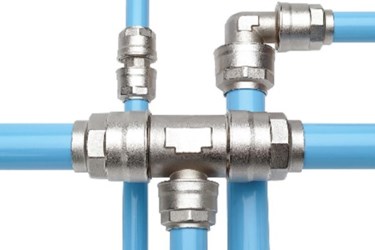How Is Your Facility's Compressed-Air Quality?
By Laurel Maloy, contributing writer, Food Online

Microbial and solid contaminants can infiltrate compressed-air systems and cause food contamination at points of both direct and indirect contact, on food and food-contact surfaces. Is your system doing everything it can to prevent this?
Many of the published, regulatory materials are vague in terms of air-quality specifications and are horrendously hard to understand. This fact has led to a disparate difference in compressed-air quality from company to company, and sometimes at different facilities within the same company. This is the inherent problem with risk-based programs, such as Hazard Analysis and Critical Control Points (HACCP) and similar systems, as the assessment is singularly appropriate to each establishment. Food processors rely heavily upon the deployment of Current Good Manufacturing Processes (CGMPs) and Sanitation Standard Operating Procedures (SSOPs) in food defense and safety systems. However, the development of an effectual HACCP Prerequisite Program (PRP) in order to support the critical control points for compressed air is the most-effective way to moderate your establishment’s risks.
The compressed-air system is an ideal breeding ground for fungi and Mesophilic Aerobic bacteria, those which thrive best in median temperatures. The following are all potential foodborne contaminants capable of inhabiting a compressed-air system and contaminating food and food-contact surfaces:
- Listeria monocytogenes: Listeria is one of the most adaptable pathogens; therefore prolific foodborne pathogens
- Thiobacillus novellus: Scientific experts believe this pathogen should be reclassified, adding it to the subclass Proteobacteria, the same as E. coli and Salmonella
- Staphylococcus aureus: This bacterium is commonly found in up to 25 percent of healthy people and is even more prevalent in those with an infection of the eyes, nose, throat, or skin. Foods made by hand with no additional cooking are most at risk. This is a flesh-eating bacterium that causes Necrotizing Fasciitis
- Streptococcus pyrogenes: This pathogen’s most serious complications include rheumatic fever and the enabling of invasive bacterium, such as S. aureus (above)
- Streptococcus pneumoniae: Certain strains of this bacterium are antibiotic resistant and can be the cause for contracting S. aureus (above)
- Escherichia coli: Or simply called E. coli, this pathogen is responsible for some of the largest foodborne illness outbreaks in our history
- Clostridium kluyveri (Type A): This pathogen depends upon acetate and ethanol to provide its energy. Though it is rarely attributed to food poisoning, its cousins, Clostridium difficile and Clostridium perfringens are well known
All pathogens need certain conditions, such as light, air, and moisture, in order to thrive. Taking away just one of these elements will inhibit their growth, albeit only temporarily. Adding that element back in at any stage, and in the most minute capacity, can enable the pathogen to grow again. For example, drying the air inside a compressed air system may cause a pathogen to go dormant, though it will resume procreating as soon as the humidity rises. Because compressed air systems are dynamic, one solution will not necessarily provide protection across the entire system. The very nature of the compressed air system presents ideal conditions for infectious biofilm growth. In many instances, even the inevitable migration of food-grade lubricants can contribute to optimal growth and probable contamination. Harborage sites, such as fittings, fixtures, piping, reservoirs, and controls provide perfect nurseries for germs to grow. Ready-to-Eat (RTE) foods are particularly at risk for compressed air contamination. This is due to the fact that during the latter stages of processing, there are few, if any, obstacles or impediments to microbial contamination.
There are two ways that contaminants can infiltrate your compressed-air system:
Through the Air Compressor: The air compressor takes in outside air, which can be contaminated with pathogens present in water vapor, atmospheric dirt, or oil vapors. This action results in contaminated water and oil aerosols, condensed liquid water, and liquefied oil being introduced to the system, specifically into the air receiver.
Through the Air Receiver: The rust and pipe scale provides safe haven for growing pathogens and becomes dislodged. Then, along with everything that was introduced through the air compressor, is borne into the distribution piping and into the compressed air distribution system.
The Safe Quality Foods (SQF) Guidance Document for Module 11, 7th Edition, published in May of 2013, provides the most judicious filtration values. Module 11, entitled Good Manufacturing Practices for Processing of Food Products, provides air quality implementation guidance in Section 5.7 on page 48.
In order to achieve the optimal, air-quality specifications, a two-pronged system is recommended. First, remove as much moisture from the air as possible before distributing it throughout the plant. Second, use point-of-use, sterile, air filtration in all areas where compressed air comes into direct or indirect contact with food or food-contact surfaces. Finally, the compressed-air quality should be tested at each identified direct or indirect contact point periodically. ISO 8573-7:2003 specifies the appropriate test methods for microbiological contaminants, while ISO 8573-4:2001 details the test methods for solid particle content.
